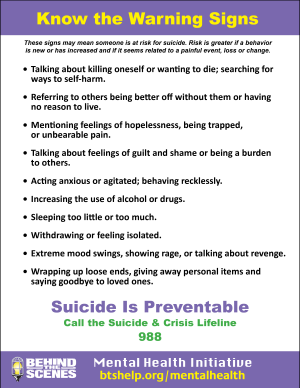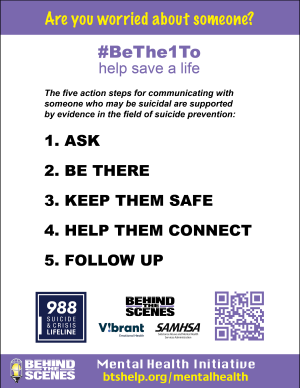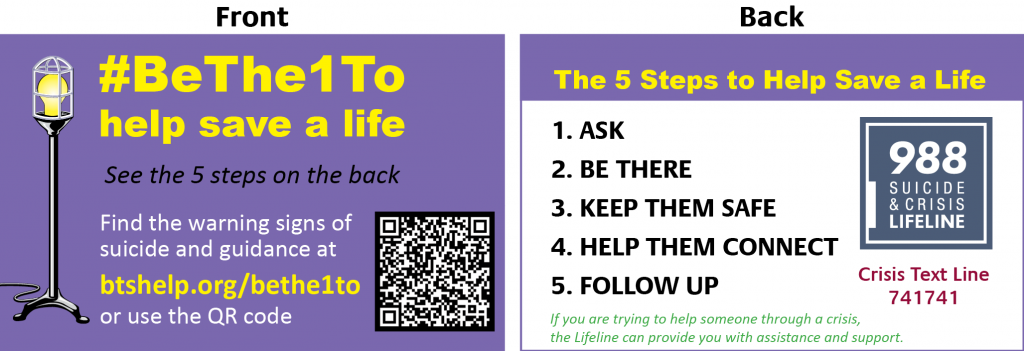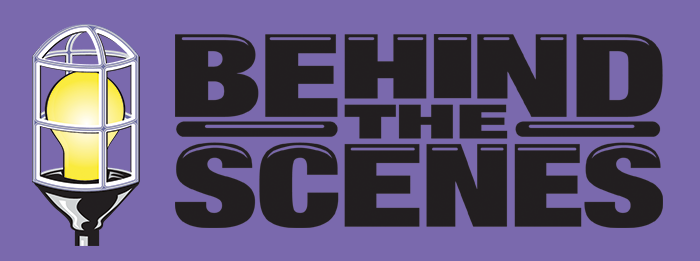#BeThe1To
Help Save a Life
We can all take action to prevent suicide. Most people want to help someone in distress but don’t know what to say or do –
or are afraid they might make things worse. Evidence shows this is not the case. It is critical to reach out.
Below are some simple steps that can make all the difference.

Know the Warning Signs
The more familiar you are with the warning signs of suicide, the more likely you are to recognize them. US posters refer to Suicide & Crisis Lifeline. Canadian posters refer to Suicide Crisis Helpline Canada. Please download and print a poster below and put it up everywhere you can, including call boards, notice boards, breakrooms, and anywhere other safety information is shown.
English (US) | Spanish (US) |
|---|---|
8-1/2 x 11 (PDF) | 8-1/2 x 11 (PDF) |
English (Canada) | French (Canada) |
|---|---|
8-1/2 x 11 ( PDF) | 8-1/2 x 11 (PDF) |
#BeThe1To
There are five steps that can be critical to saving a life. The more familiar you (and everyone around you) are with them, the more comfortable you will be taking those steps. US posters refer to Suicide & Crisis Lifeline. Canadian posters refer to Suicide Crisis Helpline Canada. Each poster includes a QR code that will lead you directly to more information about each of the steps.
Each of the five steps is very straightforward, but implementing them can sometimes be a little daunting. How do you “Ask?” How can you “Keep them safe?”
English (US) | Spanish (US) |
|---|---|
8-1/2 x 11 (PDF) | 8-1/2 x 11 (PDF) |
Wallet Card (PDF) | Wallet Card (PDF) |
English (Canada) | French (Canada) |
|---|---|
8-1/2 x 11 (PDF) | 8-1/2 x 11 (PDF) |
Wallet Card (PDF) | Wallet Card (PDF) |

#BeThe1To Wallet Cards Available On Request
Printed wallet cards are available in English (US and Canada) and French (Canada) for individuals and organizations. Email [email protected] with the quantity and your postal mailing address.


